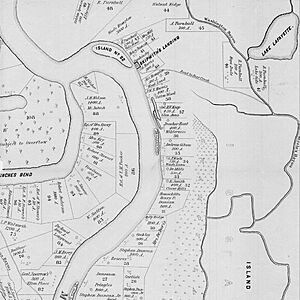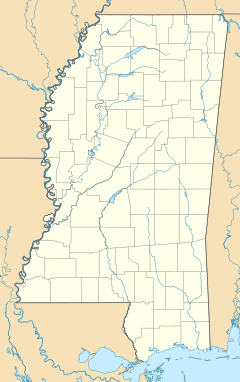Homochitto, Issaquena County, Mississippi facts for kids
Quick facts for kids
Homochitto, Mississippi
|
|
|---|---|

Part of Issaquena County c. 1866–1874 showing location of Homochitto along the Mississippi River
|
|
| Country | United States |
| State | Mississippi |
| County | Issaquena |
| Elevation | 98 ft (30 m) |
| Time zone | UTC-6 (Central (CST)) |
| • Summer (DST) | UTC-5 (CDT) |
| GNIS feature ID | 687598 |
Homochitto was a very large farm, known as a plantation, located right on the Mississippi River. It was in Issaquena County, Mississippi, in the United States. The name "Homochitto" comes from the Choctaw language. It likely means "big red." This name was also used for a river in Mississippi.
What Was Homochitto?
Homochitto was an 800-acre plantation. It was situated directly on the Mississippi River. The area was first part of Washington County. Later, it became part of Issaquena County.
Who Owned Homochitto?
Homochitto Plantation was owned by a man named Stephen Duncan. In 1831, tax records show that Duncan forced 96 people to work there. These individuals were enslaved. The property itself was about 1,520 acres in size.
Life After Slavery Ended
In 1865, slavery was officially ended in the United States. After this, many freedmen were listed at the Homochitto Plantation. Freedmen were people who had been enslaved but were now free.
Stephen Duncan had a contract about how the freedmen would be paid. However, this contract was not approved. It was considered to offer "insufficient compensation" to the freedmen. This means the pay offered was not enough.
During the Reconstruction period, the U.S. government made maps of land available for lease. Homochitto Plantation was on one of these maps. It was listed as property number 31. The map showed that Homochitto was different from nearby plantations. It did not have a main house. It also had no slave quarters or a cotton gin. A cotton gin is a machine that separates cotton fibers from their seeds. The legal owner at that time was listed as Henry P. Duncan.



